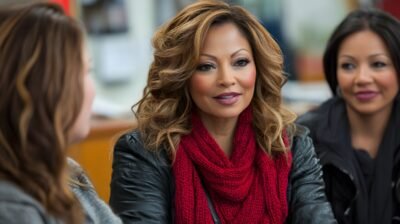In the wake of the Supreme Court decision regarding parental rights and LGBTQ+ curriculum opt-outs, many of us find ourselves sitting with complex emo
 In the wake of the Supreme Court decision regarding parental rights and LGBTQ+ curriculum opt-outs, many of us find ourselves sitting with complex emotions. This isn’t a simple matter—not for parents, not for educators, and certainly not for the children caught in the middle of it all.
In the wake of the Supreme Court decision regarding parental rights and LGBTQ+ curriculum opt-outs, many of us find ourselves sitting with complex emotions. This isn’t a simple matter—not for parents, not for educators, and certainly not for the children caught in the middle of it all.
There are those who are deeply committed to ensuring that children learn about the full range of human experience. That includes the stories of historical figures of all backgrounds—Black, Brown, LGBTQ+, disabled, Indigenous, women, immigrant. These stories matter. They are threads in the fabric of truth, humanity, and justice.
And yet, alongside this desire to teach history honestly, we must remember: where there are children, there must be safeguards.
Children deserve to learn, yes—and they also deserve protection. Not from truth, but from confusion, overwhelm, and content that may not match their developmental stage or the values they’re being taught at home.
When we were children, lessons were carefully designed to both educate and protect.
-
Fire safety was taught by the fire department. They pulled up in the big red trucks, sirens on, and we were fascinated. We learned to “stop, drop, and roll” from the very people who lived that experience.
-
Dental hygiene was introduced to us by real dentists. We left with free toothbrushes and a lesson in brushing that stayed with many of us to this day.
-
Sex education began in middle school. Taught by professionals from the local health department, it was factual, respectful, and age-appropriate. Boys were in one classroom. Girls in another. Information was given, but boundaries were honored.
Even as domestic and sexual violence victim advocates, when we are invited into classrooms, we teach lessons under the title of “healthy relationships.” We don’t bring in our raw advocacy material. We try not to overstep. We meet children where they are. We honor the diversity of family values. We follow guidelines. We collaborate with educators and counselors weeks before we walk into the school.
That’s what safeguarding looks like.
This is not about shielding children from truth. It is about delivering truth with care, wisdom, and responsibility. It is about asking:
-
Is this developmentally appropriate?
-
Who is delivering this material—and are they qualified? Female registered nurses with experience working with teens and explaining anatomy and reproduction delivered trainings to the girls.
-
Are we centering the needs of the children, or projecting our adult agendas?
We can and must hold multiple truths:
-
That education should be inclusive.
-
That children need to learn about people who are different from them.
-
That learning must come with boundaries, professionalism, and parental engagement—not as a burden, but as a birthright.
The way forward isn’t outrage. It’s discernment.
In our next post, we’ll explore how safeguarding isn’t censorship—it’s a form of compassionate discipline, rooted in love and in the deep understanding that childhood is not just a phase. It’s a sacred foundation.
